Hyundai Kona VS Dacia Sandero – Specs, Efficiency & Price Comparison
Find out now which car fits your needs better!
The Hyundai Kona (SUV) is powered by a Petrol, Full Hybrid or Electric engine and comes with a Manuel or Automatic transmission. In comparison, the Dacia Sandero (Hatchback) features a Petrol or LPG engine and a Manuel or Automatic gearbox.
When it comes to boot capacity, the Hyundai Kona offers 466 L, while the Dacia Sandero provides 328 L – depending on what matters most to you. If you’re looking for more power, you’ll need to decide whether the 218 HP of the Hyundai Kona or the 110 HP of the Dacia Sandero suits your needs better.
There are also differences in efficiency: 14.60 kWh4.50 L vs 5.30 L. In terms of price, the Hyundai Kona starts at 23100 £, while the Dacia Sandero is available from 10700 £.
Compare all the key specs now and find out which model fits your lifestyle best!
In the budget-friendly hatchback segment, the Dacia Sandero stands out for its unbeatable price point and practical design, making it an ideal choice for cost-conscious drivers looking for essential features and reliable performance. On the other hand, the Hyundai Kona offers a more premium experience with its stylish design, advanced technology, and a range of more powerful engine options, catering to those who desire a compact SUV with a sporty edge. Ultimately, the choice between these two depends on whether your priority is affordability and simplicity with the Sandero or a more upscale feel with the Kona.
Hyundai Kona
The Hyundai Kona blends a bold design with a versatile interior, making it a standout choice in the compact SUV market. Its crisp handling and responsive steering provide an engaging driving experience, whether in the city or on the open road. The vehicle also offers a range of features designed to enhance comfort and connectivity, ensuring a pleasurable journey for both driver and passengers.
details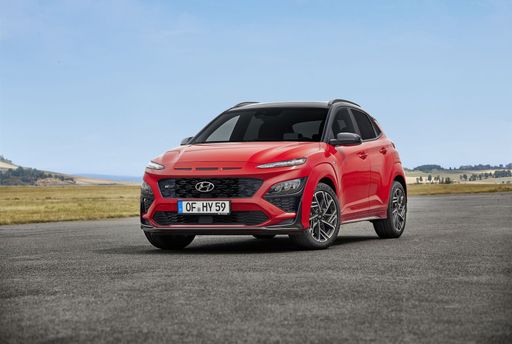 @ hyundai.news
@ hyundai.news
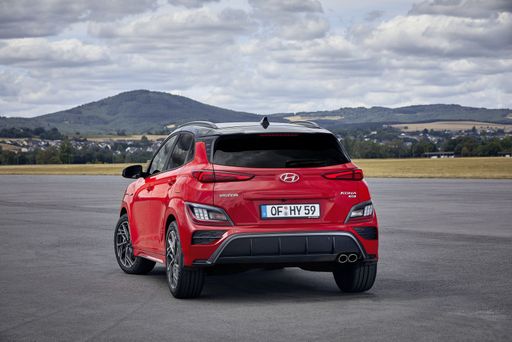 @ hyundai.news
@ hyundai.news
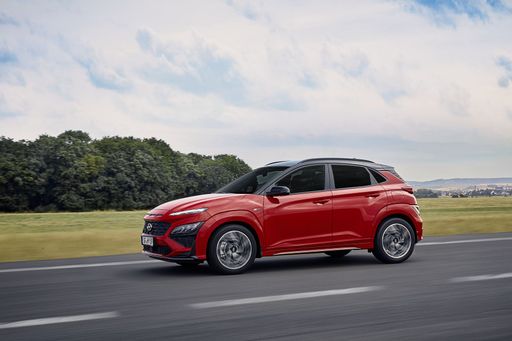 @ hyundai.news
@ hyundai.news
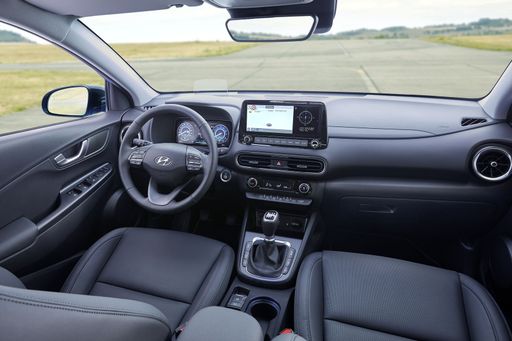 @ hyundai.news
@ hyundai.news
Dacia Sandero
The Dacia Sandero stands out as an exceptional value in the hatchback market, offering a blend of practicality and affordability that appeals to a wide range of drivers. Its understated design is complemented by a surprisingly spacious interior, providing ample comfort and functionality for everyday use. With impressive fuel efficiency and a solid reputation for reliability, the Sandero remains a popular choice for those seeking a no-nonsense vehicle without sacrificing essential modern features.
details @ dacia.at
@ dacia.at
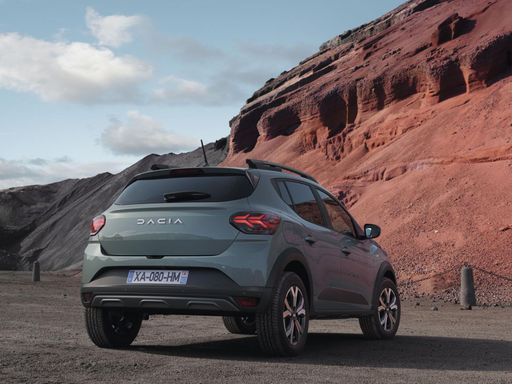 @ dacia.at
@ dacia.at
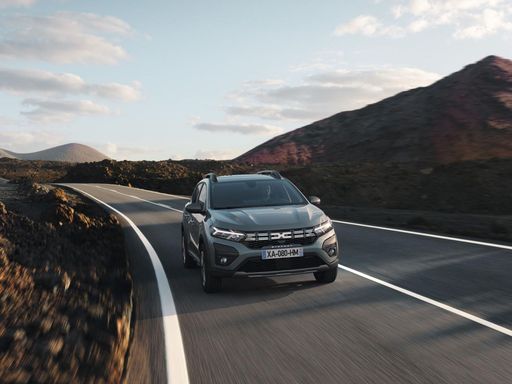 @ dacia.at
@ dacia.at
Comfort and Convenience: A Tale of Two Cities
In the automotive world, comfort and convenience often make the difference between two competing vehicles. The Dacia Sandero, classified as a hatchback, offers a spacious interior despite its compact city-friendly design and reaches a length of up to 4099 mm. The Hyundai Kona, on the other hand, represents the SUV category with its more robust design and increased length of 4385 mm, providing ample space and comfort.
The interior design of both vehicles ensures a seating capacity for five, although the Kona's SUV stature offers more trunk space with 466 liters compared to Sandero’s 328 liters. Whether it’s a family's day out or a solo road trip, both accommodate various cargo needs stylishly and efficiently.
Performance: Power, Efficiency, and Speed
Turning to performance, the Sandero offers a choice of engines, the most potent one delivering 110 hp and achieving acceleration from 0-100 km/h in 10 seconds. It offers front-wheel drive capabilities, which is ideal for city driving, and comes paired with manual or CVT automatic transmissions.
The Hyundai Kona provides a diverse range of engine options, from petrol variants to a full hybrid and even an electric model. With power outputs ranging from 100 hp to 218 hp, the Kona doesn't hold back. The acceleration from 0-100 km/h can be as quick as 7.8 seconds with their most powerful variant, making it suitable for anyone looking for a thrill.
Fuel Efficiency and Environmental Considerations
Fuel consumption is crucial for today's environmentally conscious consumers. The Sandero proves to be efficient, consuming between 5.2 L to 7 L/100 km depending on the variant, along with CO2 emissions ranging from 105 to 129 g/km.
The Kona shines here with its hybrid and electric models. While petrol variants consume between 4.5 L to 6.7 L/100 km, the fully electric model offers a range of up to 514 km on a single charge with no CO2 emissions. The hybrid variant offers a balanced choice for consumers conscious of both fuel costs and environmental impact.
Technology and Innovations
When it comes to technology, both cars have embraced modern innovations. The Sandero touts user-friendly controls and essential technological features, emphasizing simplicity with sophistication. The Kona, in contrast, offers a more extensive suite of technologically advanced features, from more dynamic infotainment systems to driver-assistance technologies, with options for autonomous features in select models.
Conclusion: Choosing Your Road Companion
In conclusion, the choice between the Dacia Sandero and Hyundai Kona largely depends on the needs and preferences of the driver. For those seeking a budget-friendly, straightforward city car with dependable functionality, the Sandero stands as an excellent option. However, for those looking for versatility, power, and advanced technology wrapped in a stylish SUV package, the Hyundai Kona may very well be the better fit. Both models, in their design and engineering, respect the distinct needs of modern drivers, providing choice without compromising quality.

|

|
|
|
|
Costs and Consumption |
|
|---|---|
|
Price
23100 - 41600 £
|
Price
10700 - 16700 £
|
|
Consumption L/100km
4.5 - 6.9 L
|
Consumption L/100km
5.3 - 7.1 L
|
|
Consumption kWh/100km
14.6 - 16.8 kWh
|
Consumption kWh/100km
-
|
|
Electric Range
377 - 514 km
|
Electric Range
-
|
|
Battery Capacity
1.3 - 65.4 kWh
|
Battery Capacity
-
|
|
co2
0 - 157 g/km
|
co2
105 - 140 g/km
|
|
Fuel tank capacity
38 - 47 L
|
Fuel tank capacity
32 - 50 L
|
Dimensions and Body |
|
|---|---|
|
Body Type
SUV
|
Body Type
Hatchback
|
|
Seats
5
|
Seats
5
|
|
Doors
5
|
Doors
5
|
|
Curb weight
1370 - 1773 kg
|
Curb weight
1089 - 1209 kg
|
|
Trunk capacity
466 L
|
Trunk capacity
328 L
|
|
Length
4350 - 4385 mm
|
Length
4088 - 4099 mm
|
|
Width
1825 mm
|
Width
1848 mm
|
|
Height
1580 - 1585 mm
|
Height
1499 - 1535 mm
|
|
Payload
420 - 490 kg
|
Payload
404 - 436 kg
|
Engine and Performance |
|
|---|---|
|
Engine Type
Petrol, Full Hybrid, Electric
|
Engine Type
Petrol, LPG
|
|
Transmission
Manuel, Automatic
|
Transmission
Manuel, Automatic
|
|
Transmission Detail
Schaltgetriebe, Automat. Schaltgetriebe (Doppelkupplung)
|
Transmission Detail
Schaltgetriebe
|
|
Drive Type
Front-Wheel Drive, All-Wheel Drive
|
Drive Type
Front-Wheel Drive
|
|
Power HP
100 - 218 HP
|
Power HP
67 - 110 HP
|
|
Acceleration 0-100km/h
7.8 - 13.3 s
|
Acceleration 0-100km/h
10 - 16.7 s
|
|
Max Speed
162 - 208 km/h
|
Max Speed
158 - 183 km/h
|
|
Torque
200 - 265 Nm
|
Torque
95 - 200 Nm
|
|
Number of Cylinders
3 - 4
|
Number of Cylinders
3
|
|
Power kW
74 - 160 kW
|
Power kW
49 - 81 kW
|
|
Engine capacity
998 - 1598 cm3
|
Engine capacity
999 cm3
|
General |
|
|---|---|
|
Model Year
2024
|
Model Year
2024 - 2025
|
|
CO2 Efficiency Class
D, C, E, F, A
|
CO2 Efficiency Class
D, C, E
|
|
Brand
Hyundai
|
Brand
Dacia
|
Hyundai Kona
The Hyundai Kona: A Comprehensive Overview
The Hyundai Kona has established itself as a standout in the compact SUV segment, blending innovation with performance and style. As the automotive world moves towards more sustainable and efficient options, the Kona offers a variety of powertrains, from traditional petrol engines to full hybrids and all-electric models.
Powertrain Options and Performance
The Hyundai Kona's powertrain choices cater to a wide range of preferences. For petrol enthusiasts, the Kona offers a 1.0L T-GDI engine, delivering 100 PS, and a more robust 1.6L T-GDI variant with up to 170 PS. Those looking for efficiency without sacrificing power can consider the full hybrid model, offering 129 PS and an impressive consumption of 4.5 L/100km.
For a greener option, the all-electric Kona provides a compelling case. With battery capacities of up to 65.4 kWh, the electric Kona offers power outputs of 156 to 218 PS, and efficiencies as low as 14.6 kWh/100km, enabling an electric range of up to 513 km.
Technical Specifications and Innovations
Built on a robust platform, the Kona delivers versatility and reliability. With a choice between manual or dual-clutch automatic gearboxes, along with options for front-wheel or all-wheel drive, the Kona ensures a tailored driving experience. The handling is enhanced by the car's lightweight construction, balancing a 1370 to 1773 kg curb weight with dynamic performance.
The Kona's design doesn't compromise cargo space for style; it offers a generous 466 L boot capacity. With a relatively compact body, measuring 4350 to 4385 mm in length, the Kona easily navigates urban environments while still commanding a strong road presence with its 1825 mm width.
Efficiency and Eco-Friendliness
Hyundai is committed to reducing emissions, as evidenced by the Kona's CO2 efficiency ratings, which range from class A for electric models to class D for some higher-performance petrol variants. The focus on reducing environmental impact without sacrificing driving pleasure is notable throughout the Kona range.
Costing and Value
The Hyundai Kona offers commendable value for money. Pricing starts at €26,400 and reaches up to €50,690, depending on the chosen configuration. The monthly running costs range from €956 to €1090, with a cost per kilometre of 38.3 to 43.6 cents, making it a competitive option in its class.
Conclusion: Modern, Efficient, and Versatile
The Hyundai Kona stands as a testament to Hyundai's commitment to innovation, efficiency, and practicality. Whether you are inclined towards a traditional combustion engine, a hybrid for a balance of power and efficiency, or a full electric model for maximum eco-friendliness, the Kona provides a tailored solution for each unique driver preference.
Dacia Sandero
The Dacia Sandero: An Affordable Gem in the Automotive World
The Dacia Sandero has consistently positioned itself as a quintessential choice for budget-conscious buyers who seek practicality without sacrificing quality. As an integral part of Dacia's line-up, the Sandero offers a compelling blend of efficiency, robustness, and value for money. With the 2024 model, Dacia continues to enhance its offerings with a range of engine options and trim levels to satisfy diverse customer needs.
Innovative Engine Options
The latest Dacia Sandero boasts a variety of engine options, including petrol and gas variants. The range covers outputs from 67 PS to 110 PS, providing flexibility for different driving preferences. For those prioritising fuel economy, the SCe 65 petrol engine offers a commendable consumption figure of 5.3 litres per 100 km. Meanwhile, the TCe 100 ECO-G engine, running on gas, balances efficiency and performance with an output of 101 PS and a consumption of 6.5 litres per 100 km.
Efficiency and Driving Dynamics
With the Dacia Sandero, efficiency is key. The innovative TCe 90 petrol engine, available with both manual and automatic transmissions, ensures a smooth ride combined with competitive fuel efficiency - approximately 5.2 to 5.7 litres per 100 km. Additionally, the Sandero maintains impressive CO2 emissions ranging from 105 to 139 g/km, reinforcing its suitability for eco-conscious drivers.
Practical Design and Spacious Interiors
The Dacia Sandero’s design speaks to the needs of modern urban and suburban drivers. As a five-door hatchback, it provides enormous practicality alongside a spacious interior. The cabin comfortably seats five passengers and offers a generous 328-litre boot, which can easily accommodate everyday luggage and more. Its exterior dimensions, including a length of 4088 to 4099 mm and a width of 1848 mm, enable the Sandero to navigate city streets with ease.
Safety and Technological Features
Safety remains a priority for Dacia, and the Sandero is equipped with a host of features to ensure peace of mind for drivers and passengers. Options such as the latest braking technologies, stability control, and multiple airbags come standard across various trim levels. Technologically, the Sandero incorporates features like a modern infotainment system and essential connectivity options to enhance the driving experience.
Concluding Thoughts
The Dacia Sandero represents a remarkable blend of affordability, efficiency, and practicality, solidifying its place in the competitive compact car segment. Whether it's daily city commutes or longer journeys, the Sandero offers a version tailored to meet a wide array of demands and preferences, embodying Dacia’s commitment to delivering more for less. With competitive pricing and the promise of a reliable, economical drive, the 2024 Sandero continues to resonate with those seeking value in their automotive investment.
The prices and data displayed are estimates based on German list prices and may vary by country. This information is not legally binding.
